Art Fairs
The Mood Is Bright at Art Cologne, But Small Galleries Are Still Struggling to Find Sustainability
Dealers at the fair debated the virtues of new business models and collaborative ventures.
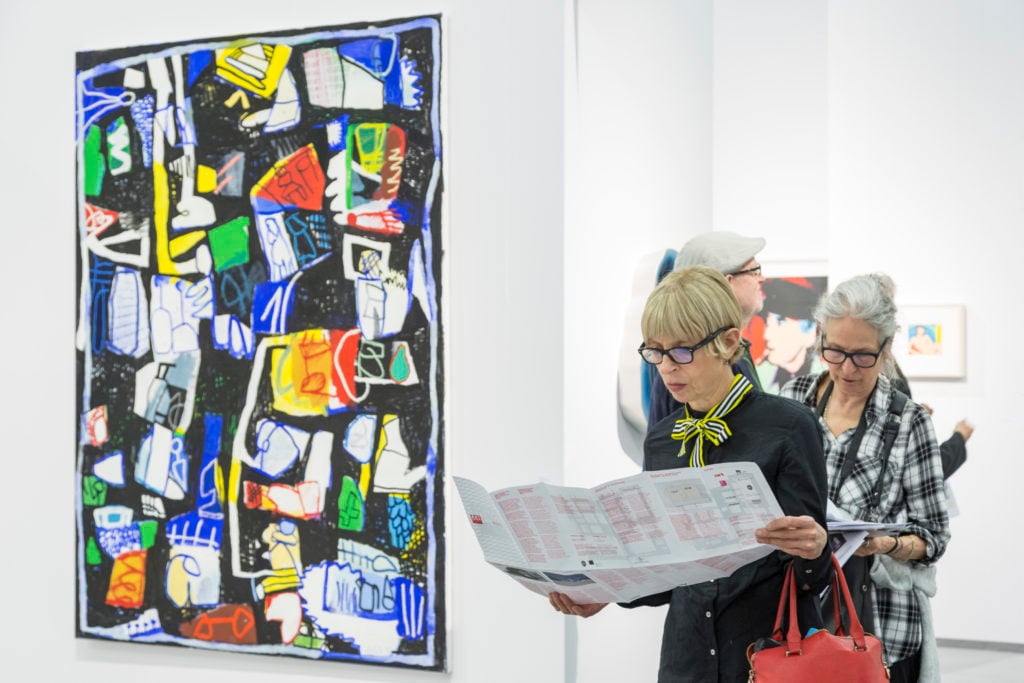
Dealers at the fair debated the virtues of new business models and collaborative ventures.

Kate Brown

The atmosphere at Art Cologne, widely regarded as the world’s oldest art fair, was notably optimistic and bustling on the opening day of its 53rd edition. It was also noticeably different than in years past, after its American director, Daniel Hug, flipped things around, shrunk some elements down, and rethought what the fair could and should be doing for its collectors and galleries.
At least in the early hours of the event, his strategy appeared to be working. During an interview with Hug, veteran dealer Rudolf Zwirner, who co-founded Art Cologne in 1967 with Hans Neuendorf among others, came over and apologized for interrupting before offering sweeping words of praise for Hug. “I can congratulate you every time, but this time, its just so optimal, it makes sense—it’s really great!” And then he was off to lunch.
Though Art Cologne, which runs through April 14 and hosts 176 galleries, enjoys a stable legacy and a pool of Rhineland collectors known for being well-educated and deep-pocketed, the event has hit some road bumps in recent years. A rival fair, Art Düsseldorf, which was initially backed by Art Basel’s parent company, MCH Group, opened in the neighboring city two years ago. The gesture was taken as an aggressive move on Cologne, and Hug described it as a “form of colonialism.” (MCH Group has since dropped Art Düsseldorf from its portfolio.)
There there are growing concerns about “fairtigue” and the financial costs of attending too many art fairs. Last year, some small galleries in the Neumarkt (new market) and Collaborations sections of Art Cologne said they felt frozen out from the event by being sequestered onto one floor of the enormous, multi-level space. Collectors, they complained, were already worn out by the time they reached their booths.
Things had to change, and so they did—this year’s edition is purposefully dramatically smaller. “I was racking my brain on how to best pull this off,” said Hug, who looked happy but tired. His solution was to raise booth prices for blue-chip galleries by 17 percent and for younger dealers by 2 percent. In the end, Art Cologne slashed its Neumarkt section by more than half, from 27 galleries in 2018 to just 13 this year, and declined applications from 21 contemporary mid-level galleries, tipping the scales back towards the fair’s traditional position as a grand, old exhibition anchored by historical art and balanced out by contemporary works.
“I had slight complaints about the price raise, but I reminded those galleries about how much Basel and FIAC cost,” Hug said.
There were some noted non-returners on the upper end, too, including Gagosian. Max Hetzler and Isabella Bortolozzi from Berlin, and Jocelyn Wolff from Paris were also absent this year. But Hug seemed to shrug that off, pointing out that galleries can try the fair for a few years and see whether it works for them. Taking over Gagosian’s prime real estate at the front of the fair was Berlin’s Galerie Neu.
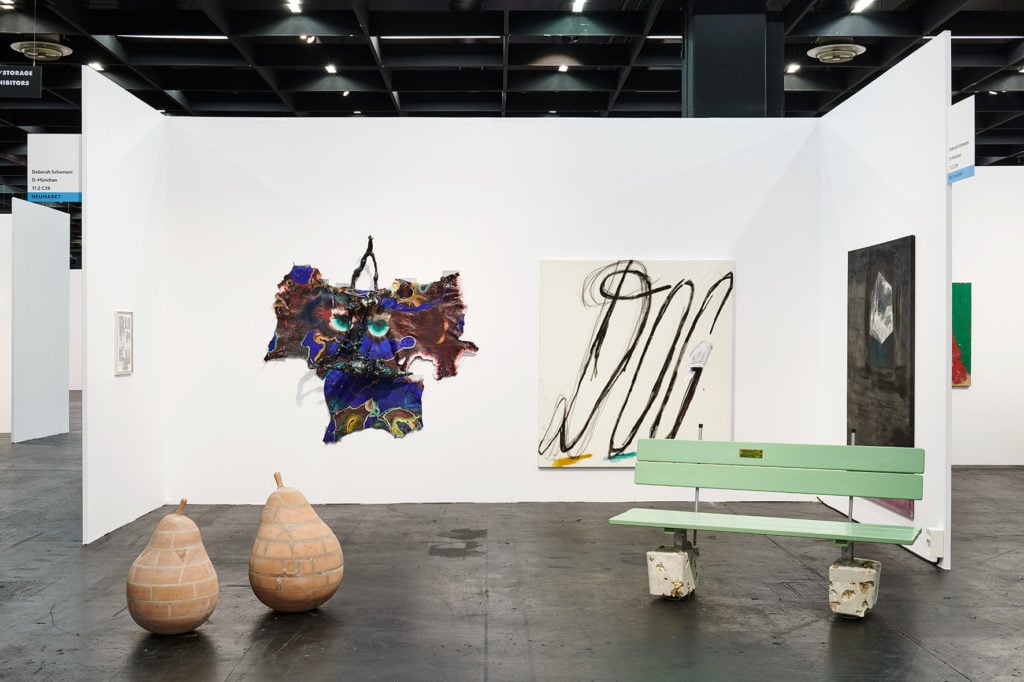
Deborah Schamoni’s booth at Art Cologne 2019.
Most dealers were positive about the changes, remarking that the fair felt busier in its condensed form. “The foot traffic is notably better now and the Neumarkt section feels energized with more focus this year,” said Munich-based dealer Deborah Schamoni, who sits on the fair’s committee that reviews applications.
She says that younger dealers such as herself have been pushing to bring the Neumarkt sector into closer proximity with the blue-chip dealers’ booths. This year, her group presentation included a bench by Australian artist Gerry Bibby that visitors were free to sit on. “Our section is lively now—and even feels like a little piazza,” she said.
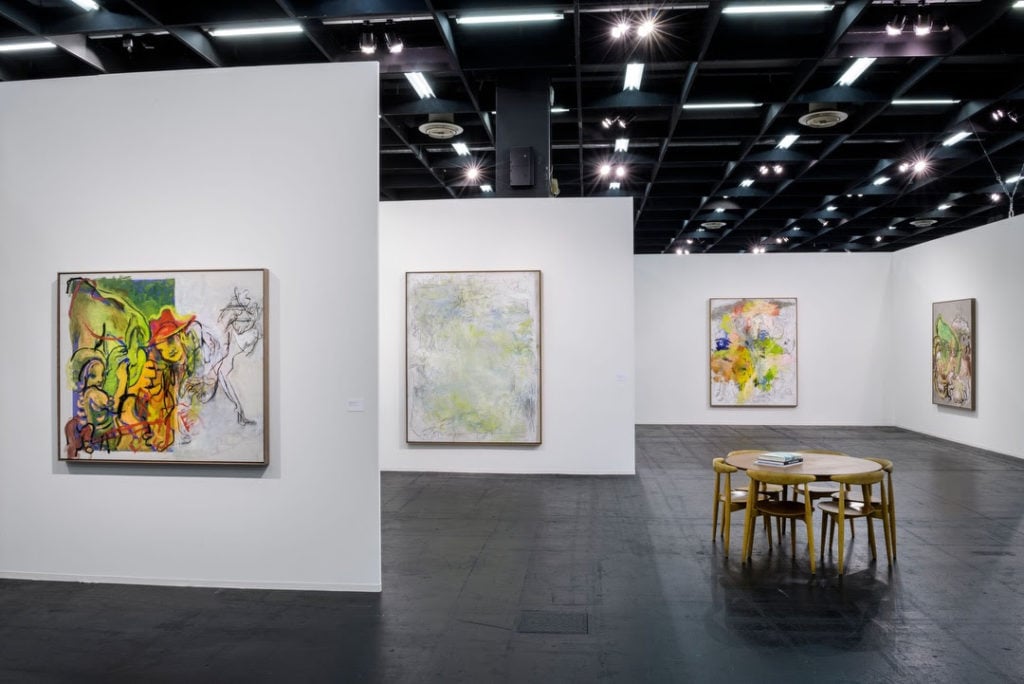
Rita Ackermann at Hauser & Wirth’s Art Cologne 2019 booth.
The struggle for younger galleries to carve out space for themselves at the fair speaks to the larger battle being played out in the market between small and mid-level galleries and the bigger powerhouses, and the topic is still a hot-button issue nearly a year after David Zwirner offered at a conference to incur an art fair tax to subsidize smaller galleries.
As dealers continue to test out collaborative formats such as gallery shares, several exhibitors at Art Cologne paired up to present joint exhibitions in the Collaborations section (which was also a bit trimmed down this year). Drei from Cologne and Esther Schipper from Berlin, two galleries of very different scales (Esther Schipper is among the strongest German galleries), met in the middle and presented a solo booth by Cologne artist Julia Scher. Her surveillance cameras, clad with pink camouflage, were recording fair-goers as they walked by, and the entire booth buzzed with a disturbing electrical hum. Nearby, Berlin-based galleries Tanja Wagner and Soy Capitán presented a powerful group presentation exploring female identity. The booth included a draping sculpture made entirely from clothing tags by Bosnian artist Šejla Kamerić.
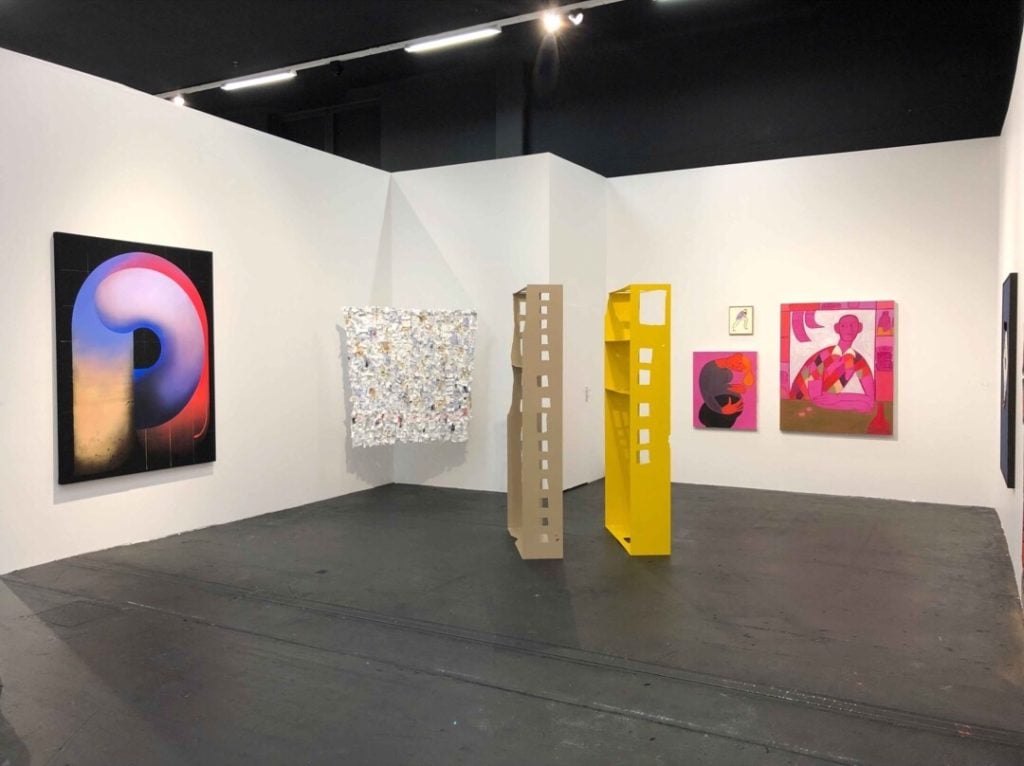
A collaborative booth between galleries Tanja Wagner and Soy Capitán at Art Cologne 2019.
And while dealers continue to look for sustainable business models and revenue streams, it seemed that at Art Cologne—a smaller, more focused fair than FIAC or Art Basel—most people were cautiously happy. Berlin-based gallery Klemm’s reported sales of works by all of their artists. Blain Southern, based in Berlin, London, and most recently New York, opted for a presentation dedicated to YBA artists, including Damien Hirst, Jake and Dinos Chapman, and Matt Collishaw, represented by his moving photographic works.
“We’re really pleased with how the fair is going so far,” said Blain Southern’s director Marie-Catherine Vogt at the closing of the first day. “We made several sales, amongst them Tim Noble and Sue Webster’s fuckingbeautiful (ice blue version) within the first hours of the fair being open.” The Noble and Webster work went for £120,000.
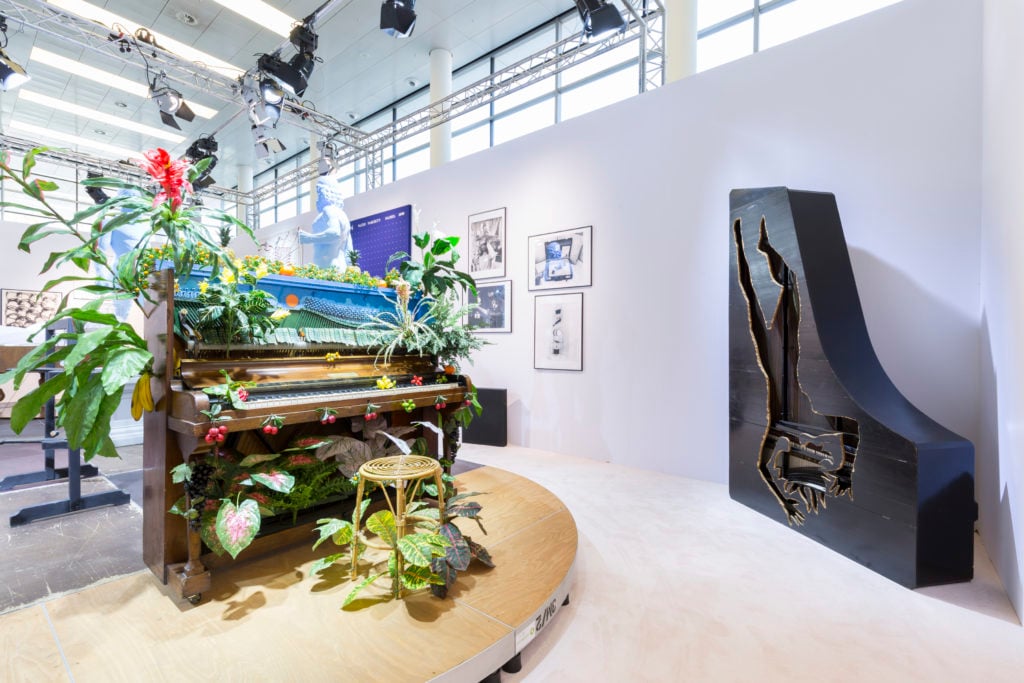
A presentation by Archivio Conz at Art Cologne 2019.
Hauser & Wirth, back for their third time in a row after a short hiatus, presented a graceful solo booth including vibrant, large-scale paintings by American artist Rita Ackermann, with works ranging from $95,000 to $120,000 (four of those works sold). The gallery also presented drawings by the artist priced at $20,000 each. Meanwhile, mid-level galleries reported lots of interest, higher foot traffic, but slower buying, though one remarked that’s a trend across the board at most fairs these days.
At the closing of the opening day, as Chanel-clad collectors filed out of the fair hall to various openings and dinners, one gallerist from Neumarkt reflected on the importance of leveling the playing field: “Let collectors decide what is valuable to them—let all the art exist on the same level.”
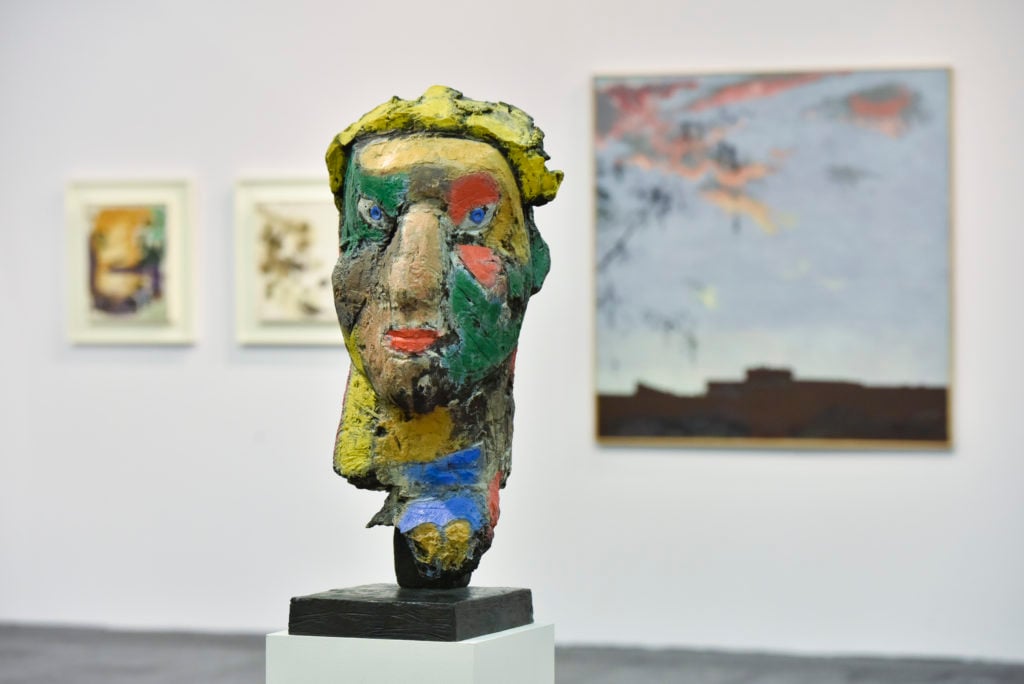
Michael Werner’s booth at Art Cologne 2019.
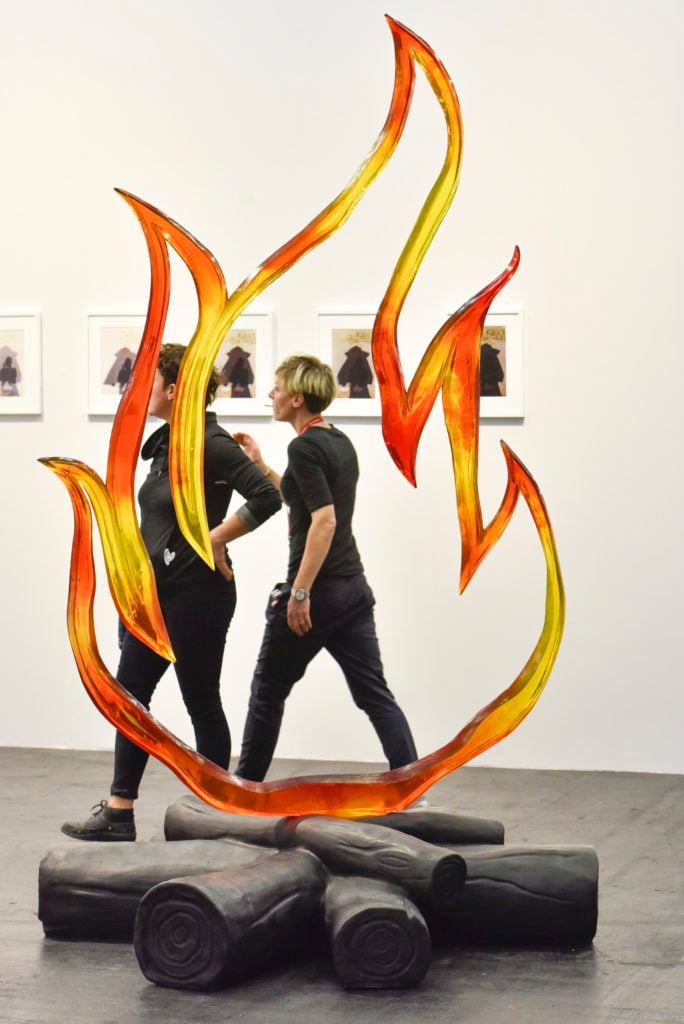
Martinetz’s booth at Art Cologne.
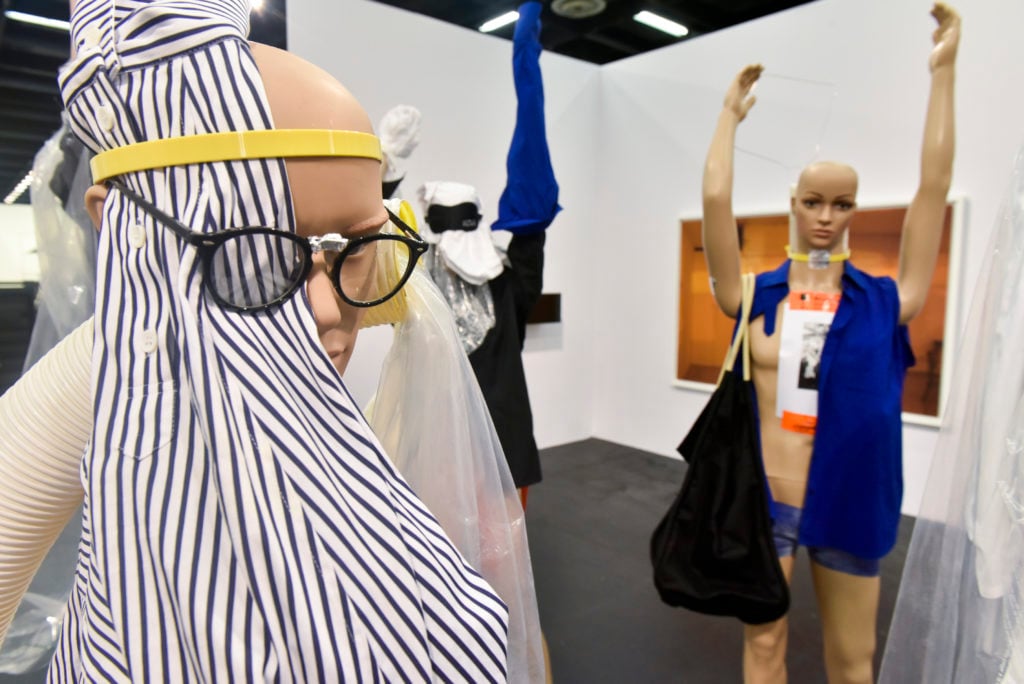
Galerie Buchholz’s booth at Art Cologne 2019.
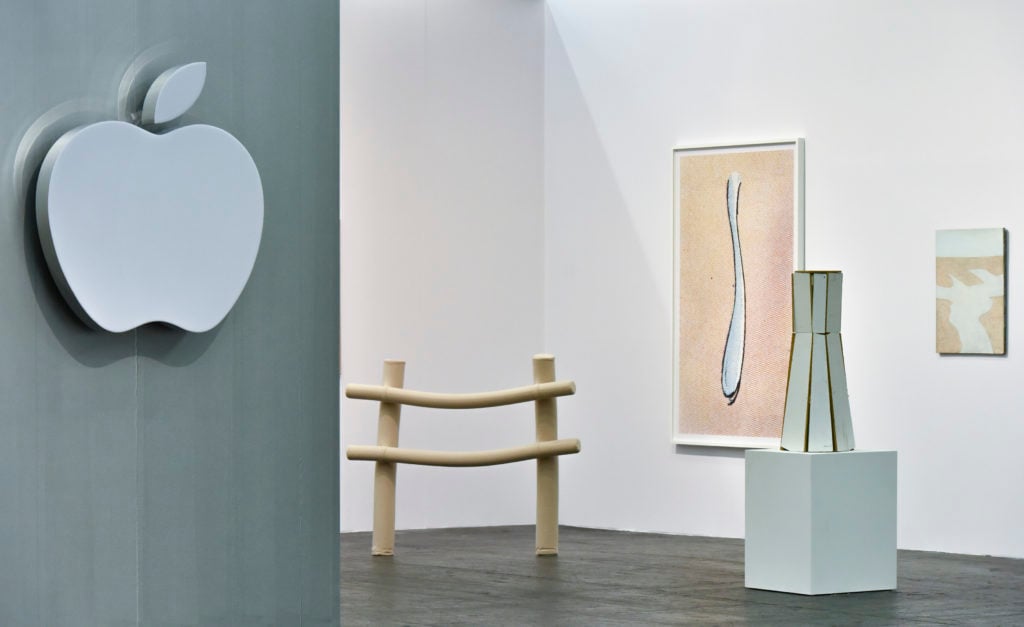
Galerie Neu at Art Cologne 2019.